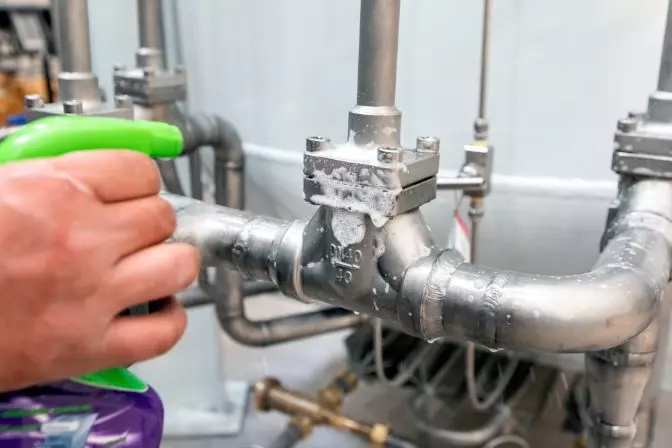Multi Wedge Belt,V Ribbed Belt,Multi-Wedge Rubber Belt,Industrial Multi Wedge Belts Jiangsu Bailite Transmission Technology Co., Ltd , https://www.zsindustrialbelt.com
# Leak Testing: A Comprehensive Guide
## What is Leak Testing?
Leak testing is a critical procedure used by inspectors to assess whether an object or system is operating within a defined leak limit. It involves identifying defects such as cracks, holes, or weak seals that may cause a liquid or gas to escape from its intended containment.
Leaks occur due to flaws in an object, enabling the contents to flow out from areas of higher pressure to lower pressure. Leak testing employs this principle by applying pressure to detect these defects, ensuring timely repairs as part of routine maintenance.
This testing is particularly relevant for objects involved in storing or transporting liquids and gases. For instance, automotive components, consumer goods packaging, medical devices, electronics, and even food containers often undergo leak testing to ensure reliability and safety.

## Why Leak Testing Matters
Leak testing is classified as a non-destructive testing (NDT) method, meaning it can be performed without causing permanent damage to the inspected object. This makes it a vital tool across industries where maintaining product integrity is crucial.
In recent years, technological advancements such as improved sensors and IoT connectivity have enhanced the sensitivity and efficiency of leak testing. Inspectors now have access to real-time data that can be shared instantly, providing actionable insights for better maintenance decisions.
## Common Leak Testing Methods
There are several methods used in leak testing:
- **Burst Testing**: Used to determine the maximum pressure a system can handle before failure.
- **Chamber Testing**: Ideal for sealed environments where direct pressure application isn't feasible.
- **Pressure Crack Testing**: Detects minute leaks or "weeping" in valves.
- **Pressure/Vacuum Testing**: Measures changes in pressure to identify leaks.
- **Pressure Decay Testing**: Monitors the loss of pressure over time to locate defects.
- **Vacuum Decay Testing**: Applies negative pressure to uncover leaks.
- **Occlusion Testing**: Identifies blockages in gas flow paths.
The typical leak test pressure limit is usually set below 15 psi or 25% of the design pressure, depending on industry standards.
## Key Considerations in Leak Testing
Performing a successful leak test requires careful consideration of several factors:
### Acceptable Leak Rate
Understanding the acceptable leak rate for an object is essential. Some leaks may not require immediate attention and could simply warrant closer monitoring.
### Manufacturing Functionality
The original purpose of a system or component influences how it should be tested. For example, a car part designed to prevent gas leaks will have different testing requirements than an IV bag meant to contain fluids.
### Material Properties
The material composition of the object affects how it responds to applied pressure. Brittle or highly flexible materials may deform under pressure, necessitating adjustments in the testing protocol.
### Medium Characteristics
The type of substance held by the object—whether liquid or gas—also plays a role. Different substances have varying molecular sizes, influencing what constitutes an acceptable defect size.
## Essential Leak Testing Equipment
Various tools facilitate effective leak testing:
- **Air Leak Inspection Devices**: Equipped with displays showing live data during tests.
- **Compact Pressure Decay Leak Tester**: Allows placement near fixtures, reducing connection volume and increasing test sensitivity.
- **Large Display Leak Tester**: Features enhanced capabilities like larger screens and greater internal storage.
- **Leak Standards**: Used to simulate leaks or calibrate multiple testing systems.
## Industry Standards and Regulations
Many countries adopt specific standards for leak testing, ensuring compliance and quality assurance. Prominent organizations like ASME, ASTM, and ISO provide comprehensive guidelines:
- **ASME**: Offers standards like ASME B31.3 for process piping.
- **ASTM**: Provides practices such as ASTM E432 for selecting appropriate testing methods.
- **ISO**: Defines international norms like ISO 20484 regarding leak testing terminology.
These standards help maintain consistency and reliability across industries, ensuring safe and efficient operations worldwide.
---
As industries continue to evolve, so too does the field of leak testing. With continuous innovation, the future holds even more sophisticated techniques and technologies that promise to enhance both precision and efficiency in this vital inspection process.